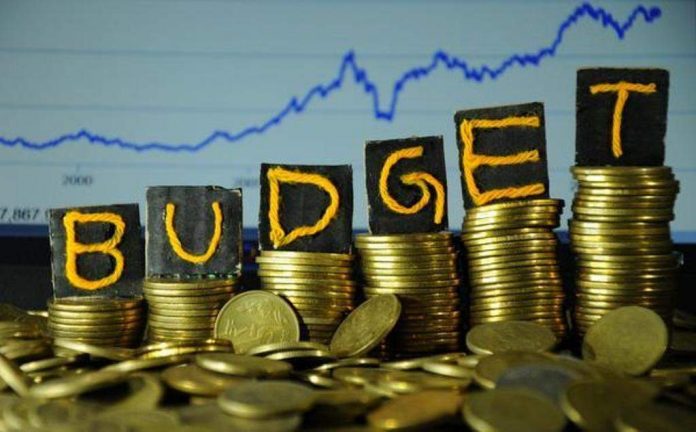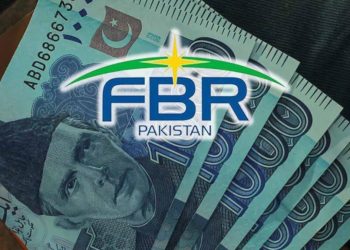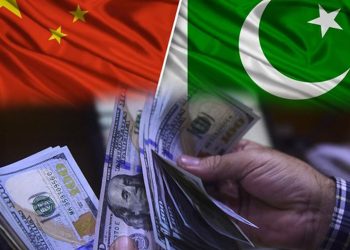Since the country’s independence in 1947, the economy of Pakistan has emerged as a semi-industrialized one, based heavily on textiles, agriculture, and food production, though recent years have seen a push towards technological diversification. In 1947, a major share of Pakistan’s GDP was from agriculture which contributed almost 53% and the rest was from manufacturing and trade. At that time almost 65% of Pakistan’s labor force worked in the agriculture sector and almost all of the exports consisted of primary products produced through agricultural means mainly jute and tea.
Economic growth during the 1950s averaged 3.1 percent per annum, and the decade was marked by both political and macroeconomic instability and a shortage of resources to meet the nation’s needs. Pakistan’s economy was quickly revitalized under Ayub Khan, with economic growth averaging 5.82 percent during his eleven years in office from 27 October 1958 to 25 March 1969. Manufacturing growth in Pakistan during this time was 8.51 percent, far outpacing any other time in Pakistani history.
Due to Economic mismanagement and imprudent economic policies caused a large increase in the country’s public debt and lead to slower growth in the 1970s. Economic growth was also affected due to the wars with India and the separation of Bangladesh. After the global oil crisis in 1973 large, generous aid from the United States also decreased leading to a further negative effect on the economy. Economic growth slowed in the wake of nationalization, with growth rates falling from an average of 6.8 percent per annum in the 1960s to 4.8 percent per annum on average in the 1970s. During the 1970s poverty and income inequality increased compared to the previous decade and the rate of inflation rose, averaging 16% from 1971 to 1977.
Pakistan’s economy recovered significantly during the 1980s via a policy of deregulation, as well as an increased inflow of foreign aid and remittances from expatriate workers. Pakistan’s rate of GDP growth rose to an average of 6.5 percent per annum in the 1980s. The completion and functioning of the Tarbela Dam helped unleash unprecedented agricultural growth, meanwhile, fertilizer and cement industries made in the 1970s contributed to economic growth. Tremendous boost in the economy was provided by rising worker remittances which reached a peak of US $3 billion in 1982-83, equivalent to 10 percent of the gross national product of Pakistan. Pakistan’s Prime Minister at that time also successfully negotiated with the United States for larger external assistance. In addition to supplying direct aid to Pakistan, the U.S. and its allies funneled about the US $5–7 billion to the Afghan Mujahideen through Pakistan, further uplifting the local economy.
Pakistan’s economy in the 1990s suffered from poor governance and low growth as it alternated between Pakistan People’s Party under Benazir Bhutto and the Pakistan Muslim League (N) led by Nawaz Sharif. The GDP growth rate sank to 4 percent and Pakistan faced persistent fiscal and external deficits, triggering a debt crisis. Exports stagnated and Pakistan lost its market share in a buoyant world trade environment. Poverty nearly doubled from 18 to 34 percent, causing the Human Development Index of the United Nations Development Programme to rank Pakistan is one of its lowest development categories during this time period.
sound structural policies coupled with improved economic management accelerated growth between 2002 and 2007. Approximately 11.8 million new jobs were created during Musharraf’s term from 1999 to 2008, while primary school enrollment rose and the debt-to-GDP ratio dropped from 100 percent to 55 percent. Pakistan’s reserves increased from the US $1.2 billion in October 1999 to the US $10.7 billion on 30 June 2004. The rate of inflation fell, while the investment rate grew to 23 percent of GDP, and an estimated $14 billion of foreign private capital inflows financed many sectors of the economy. The exchange rate also remained fairly stable throughout this period.
From 2008 to 2013 Pakistan saw a dramatic rise in violence, corruption, and unsustainable economic policies that forced Pakistan to re-enter an era of stagflation. The Pakistan economy slowed down to around 4.09 percent, as opposed to the 8.96 to 9.0 percent rate under Musharraf and Shaukat Aziz in 2004–08, while the yearly growth rate fell from a long-term average of 5.0 percent to around 2.0 percent.
In 2013 Pakistan embarked on a $6.3 billion IMF Extended Fund Facility, which focused on reducing energy shortages, stabilizing public finances, increasing revenue collection, and improving its balance of payments position. Lower oil prices, better security, higher remittances, and consumer spending spurred growth toward a seven-year high of 4.3 percent in the fiscal year 2014-15 and foreign reserves increased to the US $10 billion. In May 2014, the IMF confirmed that inflation had dropped to 13 percent in 2014 compared to 25 percent in 2008.
In 2016, articles by Forbes and Reuters declared Pakistan’s economy to be on track to becoming an emerging market in Asia, and affirmed that Pakistan’s expanding middle class is key to the country’s economic prospects.







